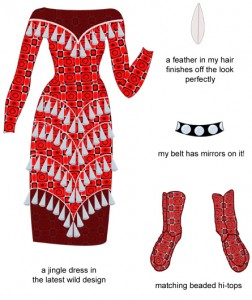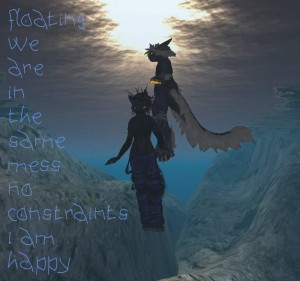Imagining Indians
http://www.imaginingindians.net/home2.htm
Further to my quest for finding aboriginal spaces in cyberspace I have come across ImaginingIndians.net. This is a paper doll timeline project created in 2000 by an aboriginal artist skawennati tricia fragnito. It traces some of aboriginal history from 1490 to 2490 through journal entries and outfits for the paper doll.
Does this project create an educational space for an aboriginal artist to self-represent her perspective of the image and history of indigenous peoples in North America? Artists have historically represented both the dominant cultural practices of the time, but also have acted as activists and produced works that subverted mainstream culture. Can a presence in a virtual environment have the same effect? I have asked for an interview with the artist to ask her opinion, but from what I have seen there is a movement among many aboriginal artists, world wide, to create spaces to connect them to each other, but also to put forward their telling of the past and their vision of the present and future.
This is then, an educational space. Where aboriginal and non-aboriginal peoples can meet and exchange information, and this information can be created by indigenous peoples. This does give contemporary FN peoples an opportunity to control the message. To me this is a very good reason for FN communities to educate themselves and their youth about electronic technology. You have to understand the medium in order to re-purpose it for your own ends.
October 30, 2011 No Comments
Contemporary Aboriginal art in Cyberspace
This is a link to the YouTube channel of contemporary Aboriginal artist sistagrlo. https://www.youtube.com/user/sistagrlro and this is her blog http://www.arohagroves.com/
I hope to speak with her about how she uses her presence in cyberspace to further her goals of Aboriginal identity and education about Aboriginal ideals and life in Australia.
Sometimes it is hard to get a hold of people in SecondLife, but I will post if I am able to speak with her.
Part of my research is to look at what value to education Aboriginal and Indigenous artists and creators see in their existences in cyberspace, so I want to speak with them directly as well as look at their work. Who do they see themselves as online?
October 2, 2011 No Comments
TimeTraveller TM
One of the interesting developments in virtual worlds it the ability to create machinima, or films using the virtual world as the subject, setting, and actors. Using the virtual world means the director can create anything, in any space, in any time.
The link below is to a machinima created by An Aboriginal Territories in Cyberspace Project
www.AbTeC.org. A young man uses a fictional technology called TimeTraveller TM to visit places and spaces of his ancestors, and the colonization of his ancestral lands.
This machinima series seems to have two purposes. One, to provide some education to the rest of us about aboriginal history in North America; and two to provide some glimpse of a future man connecting with his deep past.
I would be interested to hear what you think of this concept, and whether or not this is a positive thing or a further erosion of tribal values and identity.
My own presence in virtual worlds biases me into thinking that this is a positive expression of identity.
https://www.youtube.com/watch?v=C1RNGFkzcyY
October 2, 2011 No Comments
Self-Expression and Education
As was stated in the introduction to this course, there is no way to adequately answer all the questions of whether, what and how electronic technology should be incorporated into childhood education in FN communities. What I want to look at, is how this is happening now, and in the adult education context.
I want to look at the FN presence in cyberspace as it exists today, and how and why that contributes to both the continued education of FN adults and also adults and children in the dominant culture. Is this presence a positive or negative thing? Why do FN persons with a presence on the internet and in virtual worlds feel this is a) necessary and b) a safe thing to do?
Below are some links to some spaces set up to create aboriginal and indigenous places online.
Aboriginal Territories in Cyberspace http://www.abtec.org/blog/?p=109 and http://magazine.concordia.ca/2009/spring/features/second_life.shtml
One of their projects on creating games with FN youth http://www.rit.edu/gccis/gameeducationjournal/skins-designing-games-first-nations-youth and http://www.abtec.org/blog/?p=219
A report of an award granted to a project which created a FN interactive story in the virtual world of SecondLife http://www.canadianexpatnetwork.com/public/891.cfm
My research paper/project will look at aboriginal spaces online, and I will hopefully be able to discuss interactions I have with their creators as well as look at the research that has been done on the subject, as well as how this connects to the concept of educaton.
Although I will not be soley focusing on SecondLife I will post the SLURLs (the links to places in SecondLife) that are relevant to what I am looking at; but those will only be available to people who are already residents in that world, so I am hoping to film some of the places and people I will visit (with permission of course). This is the environment with which I am most familiar, so I am hoping to find other virtual spaces to connect with and broaden both my horizons and the scope of my project.
September 25, 2011 No Comments


